Nestled within the heart of Boston’s Public Garden lies a cherished tradition, the iconic Swan Boats, dating back over a century.
These whimsical vessels have gracefully glided across the tranquil waters of the Public Garden’s lagoon since their inception in the late 19th century, offering visitors and locals a serene escape from the bustling city streets.
Steeped in history and charm, the story of Boston’s Swan Boats intertwines with the city’s rich tapestry of culture and innovation.
From their humble beginnings in 1877, when Robert Paget, a shipbuilder, first introduced the idea, to their evolution into a beloved symbol of Bostonian pride, the Boston swan boats’ history has weathered the test of time.
This journey delves into the origins, evolution, and enduring legacy of the Boston Swan Boats, exploring the cultural significance and cherished memories they have inspired for generations of visitors and residents alike.
Boston Swan Boats History
Nestled within the picturesque confines of Boston’s Public Garden lies a cherished emblem of the city’s history and charm—the iconic Swan Boats.
From their humble beginnings in the late 19th century to their status as a beloved Bostonian institution, the story of the Swan Boats is a testament to the city’s rich cultural heritage and enduring spirit.
Origins and Innovation
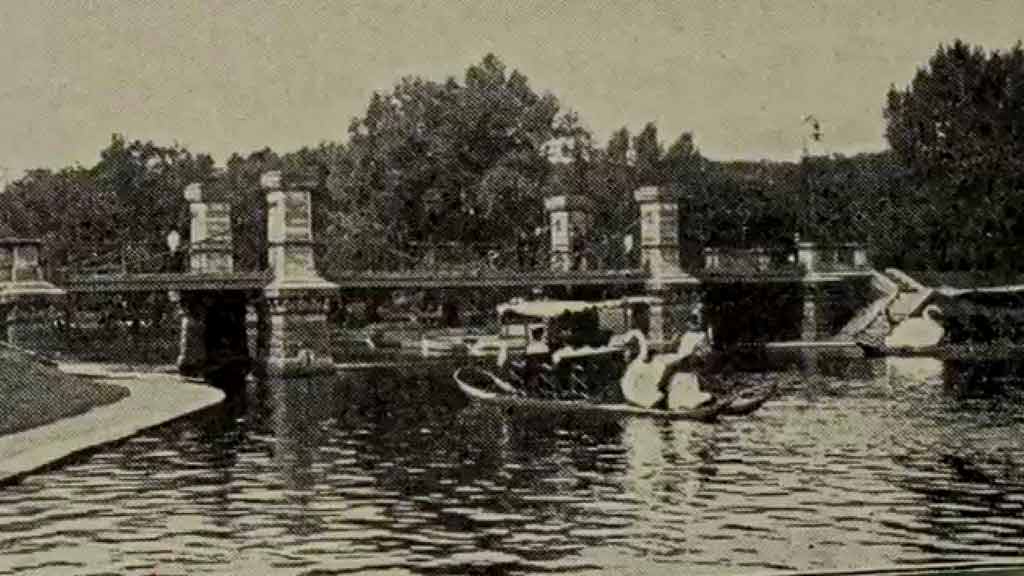
The story of the Boston Swan Boats dates back to 1877 when Robert Paget, a shipbuilder from Dorchester, introduced the concept to the Public Garden.
Inspired by the popularity of pleasure boating in Victorian-era parks, Paget envisioned a unique attraction that combined leisurely boat rides with a touch of elegance.
Drawing upon his expertise in shipbuilding, Paget crafted the first Swan Boat—a flat-bottomed wooden vessel adorned with graceful swan-shaped paddleboats.
Early Years and Evolution
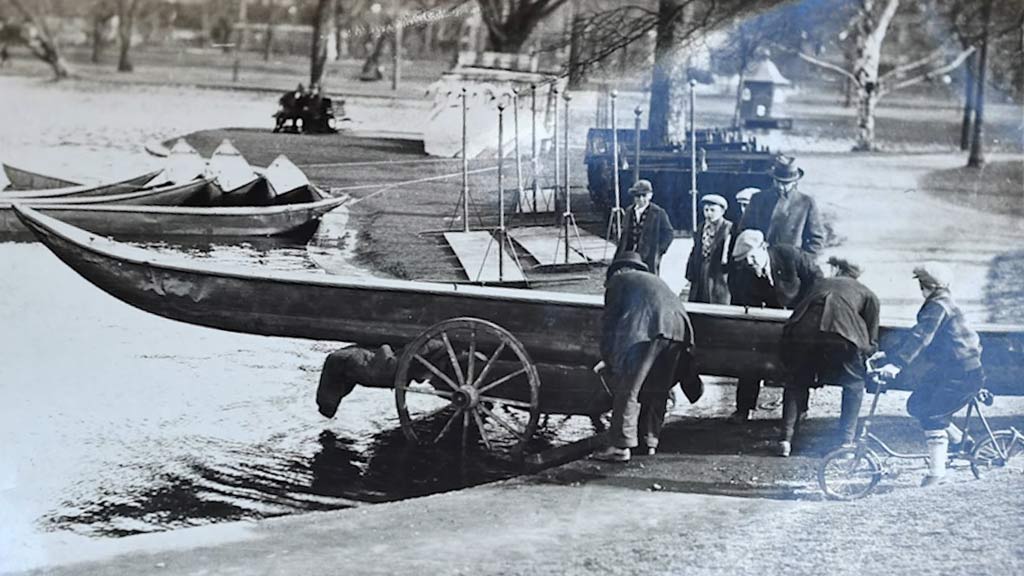
The inaugural season of the Swan Boats in 1877 marked the beginning of a beloved Boston tradition. Initially propelled by hand-cranking, the Swan Boats offered visitors a leisurely tour around the Public Garden’s lagoon, providing a serene escape from the hustle and bustle of urban life.
Over the years, the Swan Boats underwent several modifications and improvements, including pedal-powered propulsion in the early 20th century, allowing smoother and more efficient rides.
Cultural Significance
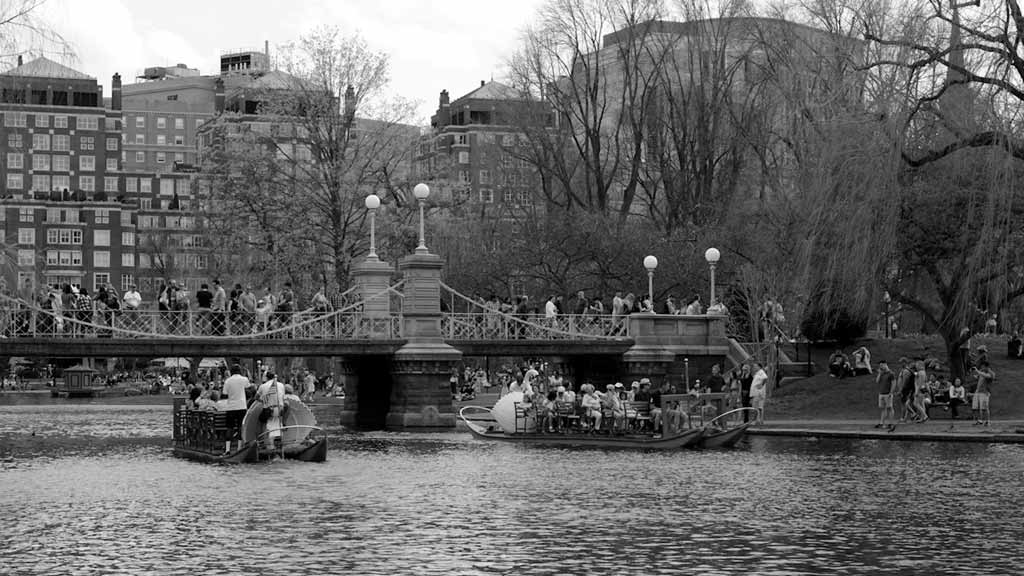
Beyond their recreational appeal, the Swan Boats hold significant cultural value within the fabric of Bostonian society.
As one of the city’s oldest and most cherished attractions, they have become synonymous with the Public Garden, a quintessential backdrop for countless memories and photographs.
For generations of Bostonians, a ride on the Swan Boats has been a rite of passage—a timeless tradition passed down from parents to children, symbolizing the enduring bond between past and present.
Iconic Symbolism
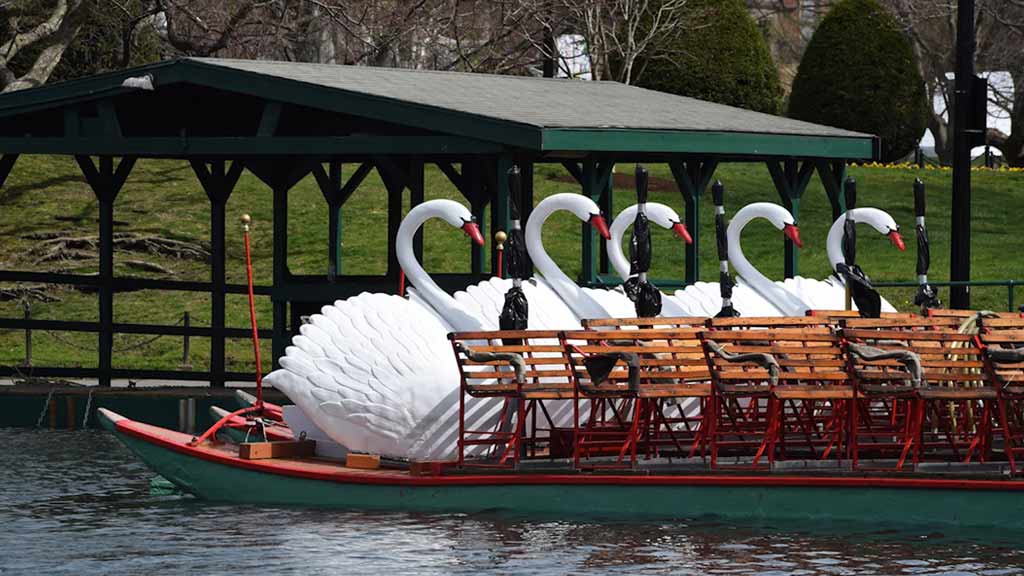
The iconic silhouette of the Swan Boats has also become a symbol of Boston’s resilience and community spirit.
Throughout adversity, including wars, economic downturns, and natural disasters, the Swan Boats have remained a steadfast beacon of hope and tranquility, offering solace to residents and visitors alike.
Their graceful presence amidst the verdant oasis of the Public Garden serves as a reminder of the city’s ability to persevere in the face of adversity.
Enduring Legacy
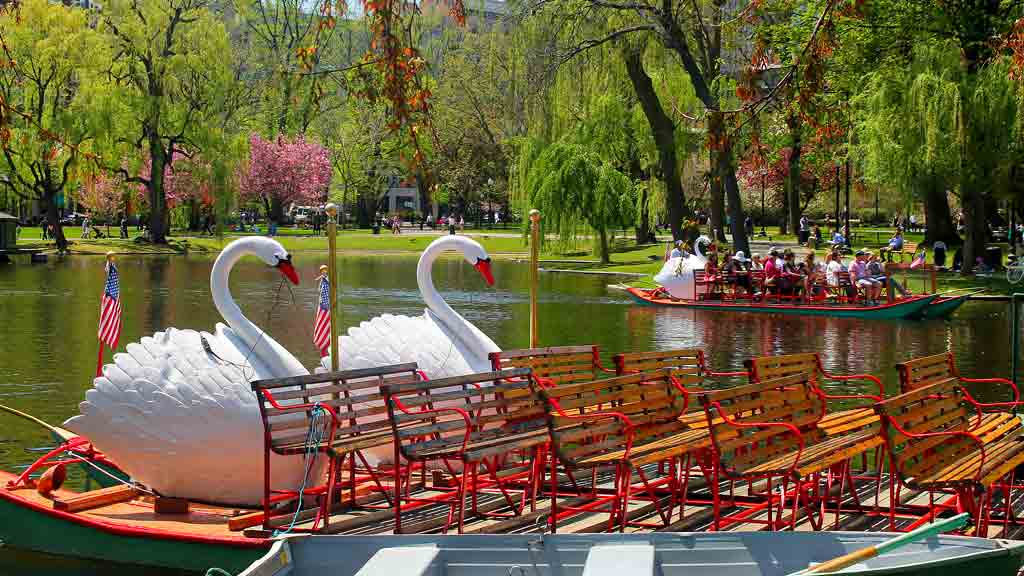
Today, the Boston Swan Boats’ legacy is a testament to the city’s commitment to preserving its cultural heritage.
Each spring, as the Public Garden awakens with the vibrant colors of blooming flowers and budding trees, the Swan Boats return to the water, ready to embark on another season of enchantment.
Visitors worldwide flock to experience the timeless charm of a Swan Boat ride, forging memories that will last a lifetime.
Preservation and Stewardship
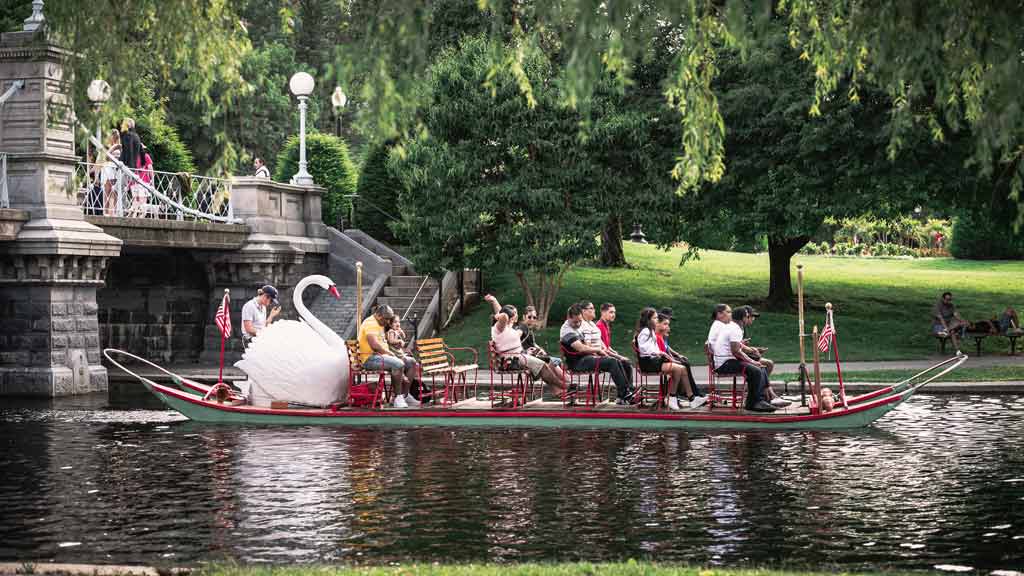
Despite the passage of time and changing cultural landscapes, efforts to preserve and protect the legacy of the Swan Boats remain steadfast.
The Paget family, descendants of Robert Paget, continues to oversee the operation of the Swan Boats, ensuring that they adhere to the same craftsmanship and tradition established over a century ago.
Additionally, the City of Boston has designated the Swan Boats as a historic landmark, further cementing their status as an integral part of the city’s identity.
How Do the Boston Swan Boats Work?
The Boston Swan Boats are not just a picturesque attraction but also a marvel of engineering and ingenuity.
Let’s delve into the intricate workings of the Boston Swan Boats, from the design of the boats themselves to the mechanisms that propel them through the water.
Design and Construction
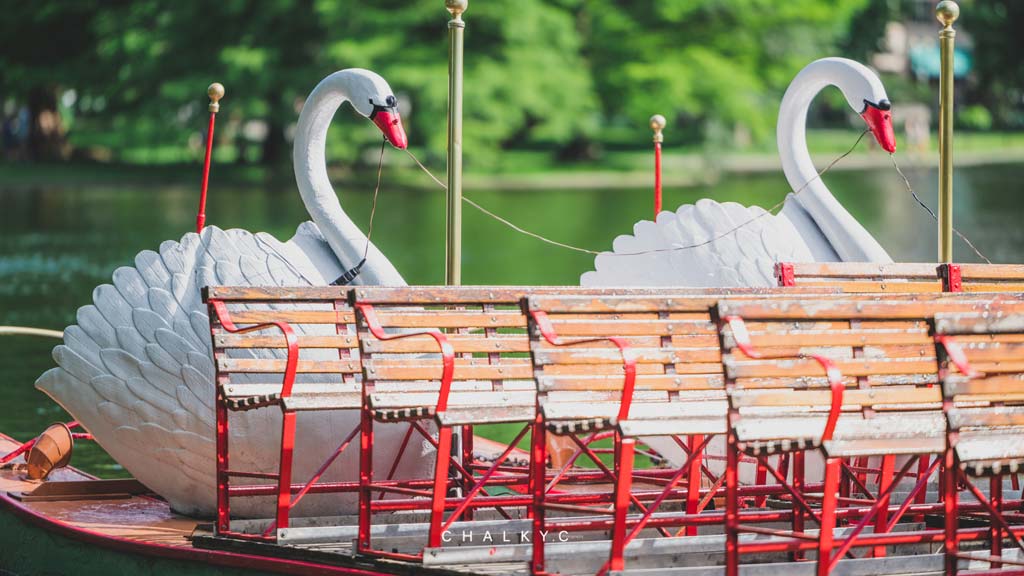
The iconic Swan Boats are constructed from wood, with a flat-bottomed hull allowing them to navigate shallow waters easily. Each boat is approximately 24 feet in length and 6 feet in width, providing ample space for passengers to sit comfortably during their ride.
The most distinctive feature of the Swan Boats is, of course, the swan-shaped paddleboats that adorn their sterns.
These paddleboats are crafted from fiberglass and are meticulously painted to resemble elegant swans, adding to the charm and whimsy of the overall design.
Ride Duration
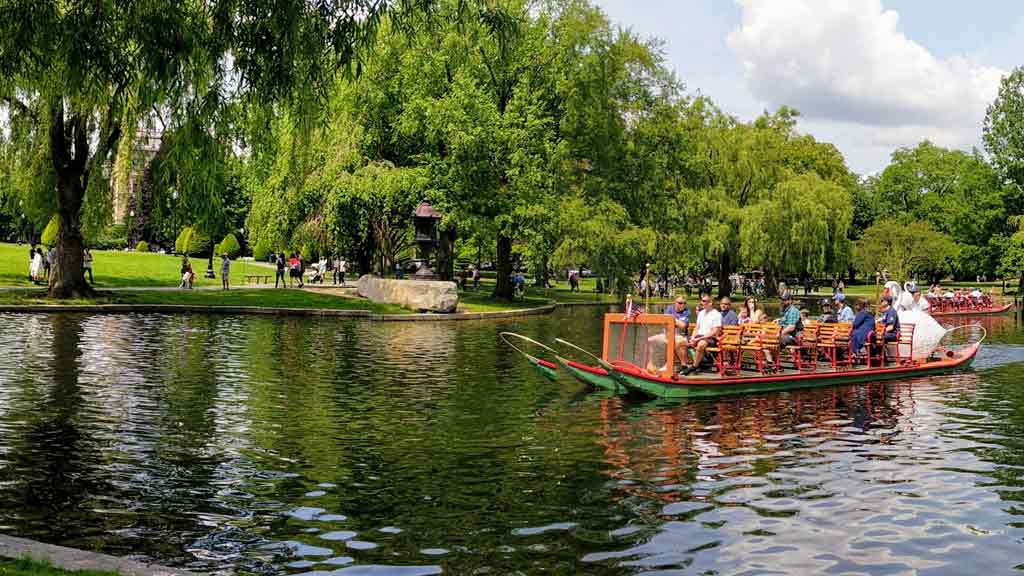
The Boston Swan Boat ride typically lasts around 15 to 20 minutes.
During this time, passengers are treated to a leisurely tour around the tranquil waters of the Public Garden’s lagoon, allowing them to enjoy the picturesque scenery and iconic landmarks such as the George Washington statue and the colorful floral displays.
Propulsion System
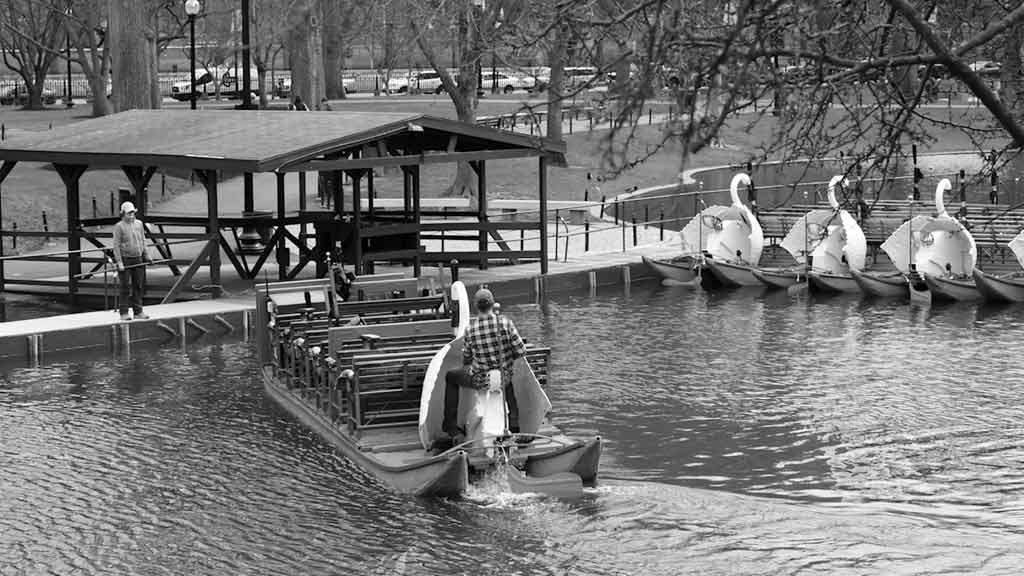
Initially, the Swan Boats were propelled by hand-cranked paddlewheels, which required considerable effort from the boat’s operator to move the vessel through the water.
However, in the early 20th century, pedal-powered propulsion systems were introduced, revolutionizing how the boats operated. Today, each Swan Boat is equipped with a pedal-powered paddlewheel located at the rear of the vessel.
Passengers seated in the rear section of the boat take turns pedaling, generating the rotational motion needed to propel the ship forward. This system allows for smoother and more efficient rides and enables passengers to participate in the experience actively.
Steering Mechanism
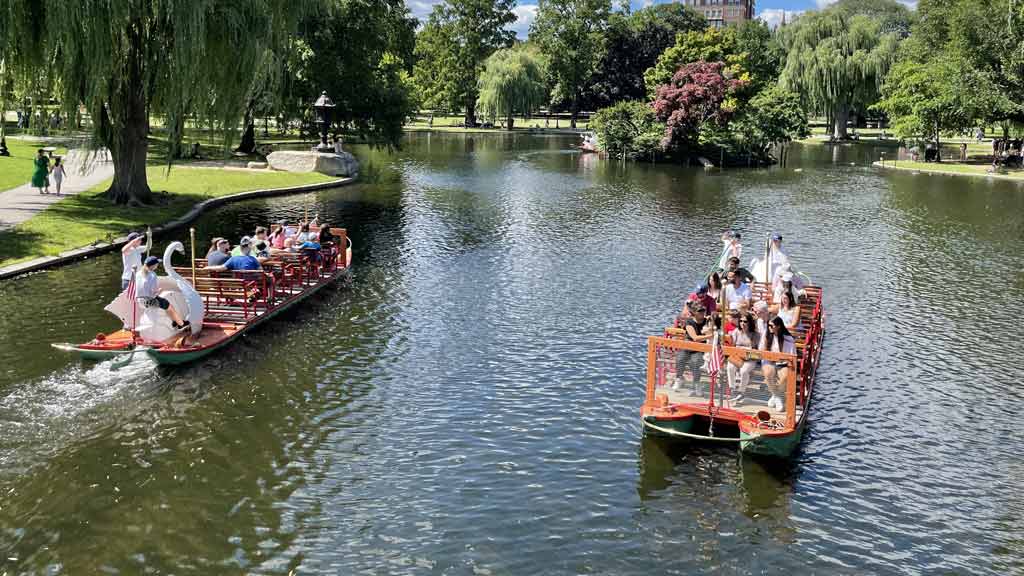
In addition to propulsion, steering the Swan Boats requires a precise and intuitive mechanism. Unlike traditional boats with rudders or steering wheels, the Swan Boats are steered using a method known as “tiller steering.”
A tiller a horizontal bar attached to the boat’s rudder controls the vessel’s direction. By turning the tiller left or right, the operator can adjust the angle of the rudder, causing the ship to turn accordingly.
This simple yet effective steering mechanism allows for precise maneuverability, essential for navigating the narrow confines of the Public Garden’s lagoon.
Operational Considerations
Operating the Swan Boats requires skill, patience, and a deep understanding of their unique characteristics. Each boat is manned by a skilled operator responsible for ensuring passengers’ safety and enjoyment throughout the ride.
Operators must be adept at maneuvering the boats through crowded waterways, avoiding obstacles such as other boats or wildlife, and providing informative commentary about the sights and history of the Public Garden.
Maintenance and Care
Regular maintenance and care are essential to ensure the continued operation of the Swan Boats. The wooden hulls must be inspected regularly for signs of wear or damage, and any necessary repairs must be promptly addressed.
The paddlewheel mechanism also requires routine maintenance to ensure smooth operation, including lubrication of moving parts and periodic replacement of worn components.
The swan-shaped paddleboats are also periodically repainted to maintain their vibrant appearance and preserve their iconic charm.
Cultural Significance
Beyond their mechanical workings, the Boston Swan Boats hold significant cultural significance within Boston.
As one of the city’s oldest and most beloved attractions, they have become synonymous with the Public Garden itself, serving as a cherished symbol of tradition and community.
For generations of Bostonians, a ride on the Swan Boats has been a rite of passage. This timeless tradition fosters a sense of connection to the city’s history and heritage.
FAQs
When did the Boston Swan Boats first start operating?
The Boston Swan Boats started operating in 1877 when Robert Paget, a shipbuilder from Dorchester, Massachusetts, introduced them to the Public Garden.
How much does it cost to ride the Boston Swan Boats?
Riding the Boston Swan Boats was typically around $4 for adults and $2.50 for children (ages 2-15). Prices may vary, so it’s best to check the official website or inquire at the ticket booth for the current rates.
Are the Boston Swan Boats wheelchair accessible?
Yes, the Boston Swan Boats are wheelchair accessible. Each boat has a ramp that allows wheelchair users to board quickly. However, it’s recommended to inform the staff if wheelchair access is required to ensure a smooth experience.
When is the best time to ride the Boston Swan Boats?
The best time to ride the Boston Swan Boats is typically during the spring and summer when the weather is mild and the Public Garden is in full bloom.
Weekdays and early mornings are often less crowded than weekends and afternoons, providing a more serene experience.
Can I make reservations for the Boston Swan Boats?
Reservations are not typically required to ride the Boston Swan Boats. Tickets are usually available on-site at the ticket booth near the lagoon.
However, during peak tourist seasons or special events, it may be advisable to arrive early to avoid long wait times.
Conclusion
As we conclude our exploration, it’s evident that these graceful vessels represent more than just a leisurely ride on a picturesque pond.
They embody a connection to Boston’s past, a testament to the city’s commitment to preserving tradition amidst modernization.
The Swan Boats have remained a steadfast symbol of tranquility and community through wars, economic fluctuations, and societal changes. These graceful vessels offer a serene escape to the heart of the city’s Public Garden.
Looking to the future, the legacy of the Swan Boats continues to inspire reverence and admiration.
As new generations of Bostonians and visitors embark aboard these timeless vessels, they contribute to an ongoing narrative of shared experiences and cherished memories.
The Swan Boats serve as a reminder of the beauty found in simplicity and the enduring power of cherished traditions, ensuring their place in Boston’s cultural landscape for years to come.
Jaclyn Lowe